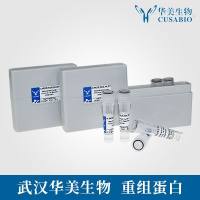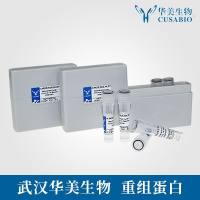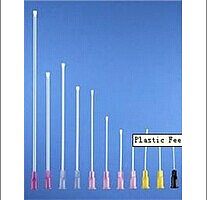Prime‐, Stress‐, and Cue‐Induced Reinstatement of Extinguished Drug‐Reinforced Responding in Rats: Cocaine as the Prototypical Drug of Abuse
互联网
- Abstract
- Table of Contents
- Materials
- Figures
- Literature Cited
Abstract
This unit describes the testing of rats in prime?, footshock?, and cue?induced reinstatement procedures. Evaluating rats in these procedures enables the assessment of treatments on behavior thought to model drug relapse precipitated by re?contact with an abused drug (prime?induced), induced by stress (footshock?induced), or by stimuli previously associated with drug administration (cue?induced). For instance, levels of reinstatement under the effects of test compound administration could be compared to levels under vehicle administration to help identify potential treatments for drug relapse, or reinstatement levels of different rat strains could be compared to identify potential genetic determinants of perseverative drug?seeking behavior. Cocaine is used as a prototypical drug of abuse, and relapse to its use serves as the model in this unit, but other self?administered drugs could readily be substituted with little modification to the procedures. Curr. Protoc. Neurosci. 61:9.39.1?9.39.40. © 2012 by John Wiley & Sons, Inc.
Keywords: drug relapse; drug abuse; cocaine
Table of Contents
- Introduction
- Strategic Planning
- Basic Protocol 1: Train and Test Rats in Cocaine‐Induced Reinstatement Procedures
- Support Protocol 1: Preparation of Catheter Lock/Antibiotic Solution
- Support Protocol 2: Construction of a Catheter Introducer
- Support Protocol 3: Construction of a Flush Syringe Assembly and Catheter Cap
- Support Protocol 4: Construction of a Tapered Polyurethane Chronic Intravenous Catheter for Rats
- Support Protocol 5: Self‐Administration Catheter Implantation in the Rat
- Basic Protocol 2: Train and Test Rats in Cocaine‐Cue Induced Reinstatement Procedures
- Basic Protocol 3: Train and Test Rats in Footshock‐Induced (Stress) Reinstatement Procedures
- Commentary
- Literature Cited
- Figures
- Tables
Materials
Basic Protocol 1: Train and Test Rats in Cocaine‐Induced Reinstatement Procedures
Materials
Support Protocol 1: Preparation of Catheter Lock/Antibiotic Solution
Materials
Support Protocol 2: Construction of a Catheter Introducer
Materials
Support Protocol 3: Construction of a Flush Syringe Assembly and Catheter Cap
Materials
Support Protocol 4: Construction of a Tapered Polyurethane Chronic Intravenous Catheter for Rats
Materials
Support Protocol 5: Self‐Administration Catheter Implantation in the Rat
Materials
Basic Protocol 2: Train and Test Rats in Cocaine‐Cue Induced Reinstatement Procedures
Materials
Basic Protocol 3: Train and Test Rats in Footshock‐Induced (Stress) Reinstatement Procedures
Materials
|
Figures
-

Figure 9.39.1 Catheter introducer components showing unmodified 1‐ml syringe and 27‐G needle above and completed catheter introducer below. View Image -

Figure 9.39.2 Catheter flush syringe assembly with attached Tygon tubing. Two catheter‐sealing caps are shown in the upper left. View Image -

Figure 9.39.3 Magnification of the tapered tip of a polyurethane jugular catheter. View Image -

Figure 9.39.4 Completed tapered polyurethane catheter on gauge card. Also shown is catheter connection post/button as assembled during surgery. View Image -

Figure 9.39.5 Mean active lever presses during the final session of self‐administration and of extinction, and during the cocaine prime‐, cue‐, and footshock‐induced reinstatement tests in rats that had previously self‐administered cocaine. Brackets through bars indicate SEM. Intragastric injections of a test compound's vehicle (saline for prime and cue tests, and 0.25% methylcellulose for footshock tests) preceded tests by 30 min. N = 12 for all groups. View Image -

Figure 9.39.6 (A ) Mean numbers of active lever presses during the cocaine footshock‐induced reinstatement test session as a function of haloperidol dose. Brackets through the bars indicate ±SEM. VEH = results of the vehicle‐treatment group. Asterisks indicate significantly different ( P < 0.05) from vehicle. N = 12 for each condition. (B ) Mean numbers of inactive lever presses during the cocaine footshock‐induced reinstatement test session as a function of haloperidol dose. Other details as in A. View Image -

Figure 9.39.7 Mean active lever presses during cocaine prime‐ (A ), cue‐ (B ), and footshock‐induced (C ) reinstatement tests in rats when tested with vehicle or doses (mg/kg i.g.) of JDTic which had previously self‐administered cocaine. Brackets through bars indicate SEM. Dotted lines indicate range of mean responses on the last day of extinction. N = 12 for all groups. View Image
Videos
Literature Cited
| Aguilar, M.A., Rodriguez‐Arias, M., and Minarro, J. 2009. Neurobiological mechanisms of the reinstatement of drug‐conditioned place preference. Brain Res. Rev. 59:253‐277. | |
| Beardsley, P.M., Howard, J.L., Shelton, K.L., and Carroll, F.I. 2005. Differential effects of the novel kappa opioid receptor antagonist, JDTic, on reinstatement of cocaine‐seeking induced by footshock stressors vs. cocaine primes and its antidepressant‐like effects in rats. Psychopharmacology 183:118‐126. | |
| Beardsley, P.M., Pollard, G.T., Howard, J.L., and Carroll, F.I. 2010a. Effectiveness of analogs of the kappa opioid receptor antagonist (3R)‐7‐hydroxy‐N‐((1S)‐1‐{[(3R,4R)‐4‐(3‐hydroxyphenyl)‐3,4‐dimethyl‐1‐pipe ridinyl]methyl}‐2‐methylpropyl)‐1,2,3,4‐tetrahydro‐3‐isoquinolinecarboxami de (JDTic) to reduce U50,488‐induced diuresis and stress‐induced cocaine reinstatement in rats. Psychopharmacology (Berl.) 210:189‐198. | |
| Beardsley, P.M., Shelton, K.L., Hendrick, E., and Johnson, K.W. 2010b. The glial cell modulator and phosphodiesterase inhibitor, AV411 (ibudilast), attenuates prime‐ and stress‐induced methamphetamine relapse. Eur. J. Pharmacol 637:102‐108. | |
| de Wit, H. and Stewart, J. 1981. Reinstatement of cocaine‐reinforced responding in the rat. Psychopharmacology 75:134‐143. | |
| de Wit, H. and Stewart, J. 1983. Drug reinstatement of heroin‐reinforced responding in the rat. Psychopharmacology 79:29‐31. | |
| Dela Pena, I., Yoon, S.Y., Lee, J.C., Dela Pena, J.B., Sohn, A.R., Ryu, J.H., Shin, C.Y., and Cheong, J.H. 2011. Methylphenidate treatment in the spontaneously hypertensive rat: Influence on methylphenidate self‐administration and reinstatement in comparison with Wistar rats. Psychopharmacology (Berl.) 221:217‐226. | |
| Jacobs, E.H., Smit, A.B., de Vries, T.J., and Schoffelmeer, A.N. 2003. Neuroadaptive effects of active versus passive drug administration in addiction research. Trends Pharmacol. Sci. 24:566‐573. | |
| Liu, Y., Le Foll, B., Liu, Y., Wang, X., and Lu, L. 2008. Conditioned place preference induced by licit drugs: Establishment, extinction, and reinstatement. Scientific World Journal 8:1228‐1245. | |
| Meyer, A.C., Rahman, S., Charnigo, R.J., Dwoskin, L.P., Crabbe, J.C., and Bardo, M.T. 2010. Genetics of novelty seeking, amphetamine self‐administration and reinstatement using inbred rats. Genes Brain Behav. 9:790‐798. | |
| Miguens, M., Botreau, F., Olias, O., Del Olmo, N., Coria, S.M., Higuera‐Matas, A., and Ambrosio, E. 2011. Genetic differences in the modulation of accumbal glutamate and gamma‐amino butyric acid levels after cocaine‐induced reinstatement. Addict. Biol. 1369‐1600. | |
| Neisewander, J.L., O'Dell, L.E., Tran‐Nguyen, L.T., Castaneda, E., and Fuchs, R.A. 1996. Dopamine overflow in the nucleus accumbens during extinction and reinstatement of cocaine self‐administration behavior. Neuropsychopharmacology 15:506‐514. | |
| O'Connor, E.C., Chapman, K., Butler, P., and Mead, A.N. 2011. The predictive validity of the rat self‐administration model for abuse liability. Neurosci. Biobehav. Rev. 35:912‐938. | |
| Schechter, M.D. and Calcagnetti, D.J. 1993. Trends in place preference conditioning with a cross‐indexed bibliography; 1957‐1991. Neurosci. Biobehav. Rev. 17:21‐41. | |
| Shalev, U., Morales, M., Hope, B., Yap, J., and Shaham, Y. 2001. Time‐dependent changes in extinction behavior and stress‐induced reinstatement of drug seeking following withdrawal from heroin in rats. Psychopharmacology 156:98‐107. | |
| Siegel, S., Hinson, R.E., and Krank, M.D. 1978. The role of predrug signals in morphine analgesic tolerance: Support for a Pavlovian conditioning model of tolerance. J. Exp. Psychol. Anim. Behav. Process 4:188‐196. | |
| Siegel, S., Krank, M.D., and Hinson, R.E. 1987. Anticipation of pharmacological and nonpharmacological events: Classical conditioning and addictive behavior. J. Drug Issues 17:83‐110. | |
| Siegel, S., Baptista, M.A., Kim, J.A., McDonald, R.V., and Weise‐Kelly, L. 2000. Pavlovian psychopharmacology: The associative basis of tolerance. Exp. Clin. Psychopharmacol. 8:276‐293. | |
| Stretch, R. and Gerber, G.J. 1973. Drug‐induced reinstatement of amphetamine self‐administration behavior in monkeys. Can. J. Psychol. 27:168‐177. | |
| Stretch, R., Gerber, G.J., and Wood, S.M. 1971. Factors affecting behavior maintained by response‐contingent intravenous infusions of amphetamine in squirrel monkeys. Can. J. Physiol. Pharmacol. 49:581‐589. | |
| Tzschentke, T.M. 2007. Measuring reward with the conditioned place preference (CPP) paradigm: Update of the last decade. Addict. Biol 12:227‐462. | |
| Key References | |
| UNIT 9.20. | |
| This protocol describes details of an alternate catheter construction and surgical procedure, as well as procedures for establishing and stabilizing self‐administration behavior. |









